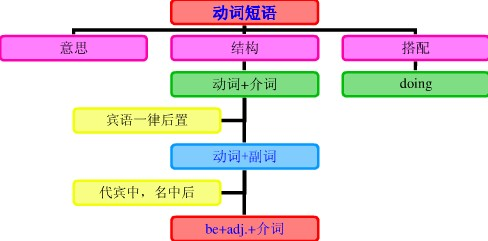本试题 “Personally I think it is the sales manager, rather than the sales girls, _____ to blame.[ ]A. isB. that isC. areD. who are” 主要考查您对动词短语
强调句
等考点的理解。关于这些考点您可以点击下面的选项卡查看详细档案。
- 动词短语
- 强调句
动词短语的概念:
动词常和某些其他词类用在一起,构成固定词组,形成所谓短语动词(phrasalverb)。和动词一样,短语动词也可分为及物和不及物两种。短语动词可以作为一个整体看待,同一般动词一样使用。
动词短语的搭配类型:
1)动词+介词:这类短语动词用作及物动词,后面须跟宾语。
如:The small boy insisted on going with his parents. 那男孩坚持要跟父母一起去。
Do you often listen to broadcasts in English? 你常听英语广播吗?
Look at the children. Aren't they lovely? 看着这些孩子们。他们多么可爱呀!
We stand for self-reliance. 我们是主张自力更生的。
这一类的短语动词还有很多,如depend on(upon)(依靠),wait on(服侍),look for(寻找),deal with(对待),look after(照料),wait for(等待)等。
2)动词+副词:
这类短语动词有的用作及物动词,有的用作不及物动词。
如:I always get up as soon as the bell rings. 我总是一打铃就起床。(不及物)
Look out, there's a car coming! 当心,来汽车了!(不及物)
Have you handed in your exercises already? 你已经交练习了吗?(及物)
Please don't forget to put on your coat, it's cold outside. 请不要忘记穿外衣,外面很冷。(及物)
这一类的短语动词还有很多,及物如put out(扑灭),eat up(吃光),put down(放下);不及物如set off(出发),come up(走近),go on(继续)。
注:"动词+副词"这类短语动词和上面第一类"动词+介词"的不同之处在于:"动词+介词"用作及物动词,后面须跟宾语。"动词+副词"则有的及物,有的不及物;用作及物动词而宾语为人称代词或自身代词时,副词往往放在宾语之后。
如:Please wake me up at five tomorrow. 请在明天早上五点唤醒我。
If you have done your exercises, please hand them in. 如果你们练习做完了请交来。
She doesn't normally behave like that, she's putting it on. 她通常并不如此表现,她是装出来的。
注:这类短语动词有不少可兼作及物和不及物动词用。
如:He took off his hat when he entered the office. 他进办公室后脱下帽子。(及物)
The plane took off at seven sharp. 飞机在七点整起飞。(不及物)
Charlie rang up Neil to ask about the time of the meeting. 查理打电话给尼尔问开会的时间。(及物)
If you can't come, please ring up and let us know. 你如来不了,请来电话告诉我们一声。(不及物)
3)动词+副词+介词:
"动词+副词"之后有的可以再加一个介词,形成另一种短语动词。这类短语动词用作及物动词。
如:Do not give up hope. We must go on with the experiment 不要失望。我们必须继续试验。(go on with继续)
He came up to me. 他走到我跟前。(come up to走近)
这类短语动词还有:look down upon(看不起),do away with(去掉),put up with(忍受)等。
4)动词+名词+介词:
这类短语动词也是及物的。
如:He shook hands with all the guests at the banquet. 他在宴会上和宾客一一握手。
Young pioneers often come to the Children's Palace to take part in after school activities.少先队员经常到少年宫来参加课外活动。
Pay attention to the temperature of the stored rice. 注意仓库里的稻谷的温度。
Her job is taking care of the babies. 她的工作是照顾婴儿。
这一类短语动词还有:put an end to(结束),take notice of(注意),catch hold of(抓住),lose sight of(看不见),make use of(利用)等。
动词短语知识体系:

强调句的概念:
强调句 (The Emphatic Pattern) 是一种修辞,是人们为了表达自己的意愿或情感而使用的一种形式。通过各种方式对句子中的某个部分进行强调,从而起到修辞的作用。英语常用的强调结构有:It is (was)+被强调部分(主语、宾语或状语)+that/who...;what…be…句型;
强调句的使用:
一、强调句句型:
1、用It is/was...that/who...句型表示强调。
(1)陈述句的强调句型:It is/was+被强调部分(通常是主语、宾语或状语)+that/who(当强调主语且主语指人)+其它部分。
e.g. It was yesterday that he met Li Ping.
(2)一般疑问句的强调句型:同上,只是把is/was提到it前面。
e.g. Was it yesterday that he met Li Ping?
(3)特殊疑问句的强调句型:被强调部分(通常是疑问代词或疑问副词)+is/was+it+that/who+其它部分?
e.g. When and where was it that you were born?
注:被强调的部分(通常是句子的主语、状语、宾语或宾语补足语)放在is/was的后面,如被强调的是人,则后面可用who,whom等代替。
如:原句:He met an old friend in the park yesterday.
强调主语:It was he who/that met an old friend in the park yesterday.
强调宾语:It was an old friend that/who he met in the park yesterday.
强调地点状语:It was in the park that he met an old friend yesterday.
强调时间状语:It was yesterday that he met an old friend in the park.
2、用助动词do, does或did来强调谓语动词。
如:Do come early.
He did send you a letter last week.
We're pleased that she does intend to come.
3、用主语从句+be+被强调部分,主语从句常用what引导。
如:What John wants is a ball.
What Mary does every day is(to) give piano lessons.
二、not...until...句型的强调句:
1、句型为:It is/was not until+被强调部分+that+其它部分:
e.g. 普通句:He didn't go to bed until/till his wife came back.
强调句:It was not until his wife came back that he went to bed.
2、注意:此句型只用until,不用till。但如果不是强调句型,till, until可通用;
因为句型中It is/was not...已经是否定句了,that后面的从句要用肯定句,切勿再用否定句了。
三、谓语动词的强调:
1、It is/was...that...结构不能强调谓语,如果需要强调谓语时,用助动词do/does或did。
e.g. Do sit down.务必请坐。
He did write to you last week. 上周他确实给你写了信。
Do be careful when you cross the street. 过马路时,务必(千万)要小心啊!
2、注意:此种强调只用do/does和did,没有别的形式;过去时用did,后面的谓语动词用原形。
使用强调句型有以下几点请注意:
①强调句的谓语is或was永远用单数。
如:It was yesterday that I met your father in the street.
②不管被强调部分是哪种状语,只能用that连接,不得使用where、when等连词。
如:It was in the street that I met your father yesterday.
③被强调部分为人时,可用who(主格或宾格)和whom(宾格)代替that,用that也行。
如:It was your father that/whom/who I met in the street yesterday.
It was I that/who met your father in the street yesterday.
④强调句中也要注意主谓一致、人称一致和否定转移的问题。
如:It is they who are our friends.
It was not until ten o'clock that we got home last night.
⑤注意不要混淆强调句和其他从句。It is/was...that...为强调句标志,去掉后仍可组成一个完整的句子,只是没被强调,而其他从句一般不具备这一特征。
比较:1)It was ten o'clock when we got home last night. 我们昨晚到家时已十点了。
2)It was at ten o'clock that we got home last night. 我们昨晚是在十点到家的。
第一句不是强调句,when不可改为that,因为去掉it was和that后,只能组成“We got home ten o'clock last night.”这样一个不完整的句子;第二句是强调句,that不可改为when。
强调句型用法拓展:
1、句首词用“It”,不能用“This”,“That”等。
2、be动词的形式是is或was,不能用复数形式are或were。若原句的谓语动词用了现在时或将来时,则用is;
若原句的谓语动词用了过去时或过去完成时,则用was。
如:It___the Chinese women that___a great role in the socialist construction.
A. is; plays
B. are; play
C .is; play
D. are; plays
答案:C
3、被强调的部分如果是代词,强调主语用主格,强调宾语用宾格。
如:It is him that/who/whom I met in the street yesterday.
It is I who/that am wrong.
4、连接词一般用that,当强调部分是人时,既可用that也可用who。特别注意当强调部分是时间状语或地点状语时,不能用when或where。
如:It was on Oct1st, 1949 that People's Republic of China was founded.
It was at the gate____he told me the news.
A. that
B. what
C. which
D. when
答案:A
5、主谓一致问题被强调的主语要和that后面的谓语动词在数上保持一致。
如:It is Mary who often _____(help) me with my English. (helps)
It is I that ____(be) against you. (am)
6、not...until结构的强调。
强调“not...until”引导的时间状语时,要用“it is/was not until...that...”结构,that后面的句子要用肯定式,且须用陈述句语序。
如:We did not get off the bus until it stopped. ?
It was not until it stopped that we got off the bus. (注意:强调该结构时not until不能分开)
与“Personally I think it is the sales manager, rather than t...”考查相似的试题有:
- _____ his accent , he is from the south of China.A.Judged byB.Judged fromC.To be judged byD.Judging from
- As Polly observed the passengers on the train, she _______that she was being watched by a tall man in a dark coat.A....
- We don’t intend to sign any documents without our lawyer.A.demandingB.discussingC.consultingD.asking
- He felt lonely in the first month abroad, but after a time he got ____ alone and even got ____ it.[ ]A. used to livin...
- It’s not safe to travel by standing at the road side hoping to be by passing motorists.A.picked upB.picked outC.pu...
- I think you’d better _____ your spare time better.A.employB.hireC.takeD.share
- I can’t stand ____ with Jane in the same office. She just refuses ____ talking whileshe works.A.working; stoppingB....
- —Oh, I______your camera. Is it all right if I bring it to you tomorrow?—All right.A.forgetB.have forgottenC.forgot...
- I don't think Jack is a man to be when we are in trouble and need his help.A.hoped forB.related toC.expected fromD...
- ----- It was at that moment_________ her appointment with the doctor.A.when she rememberedB.that she rememberedC.d...